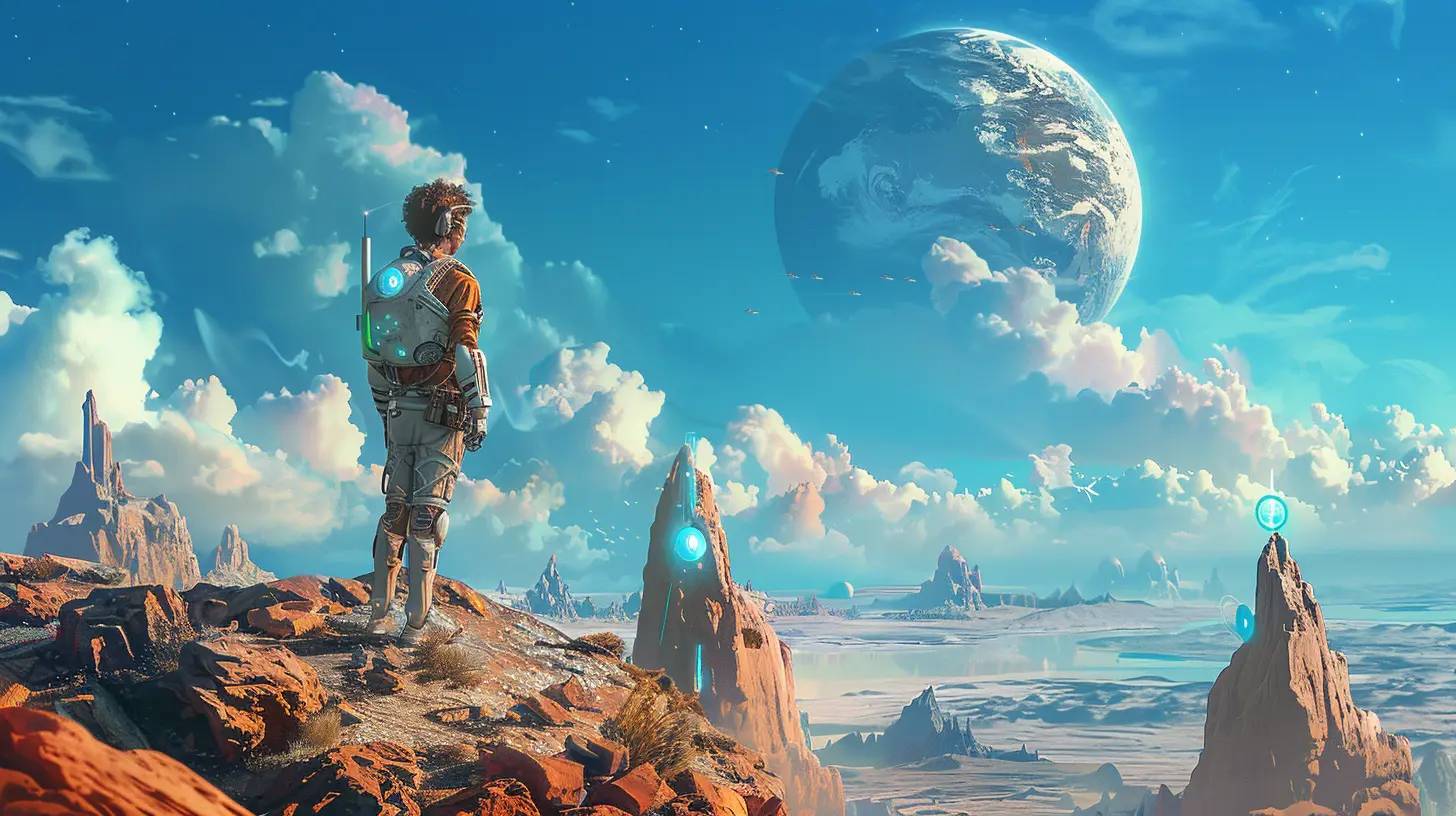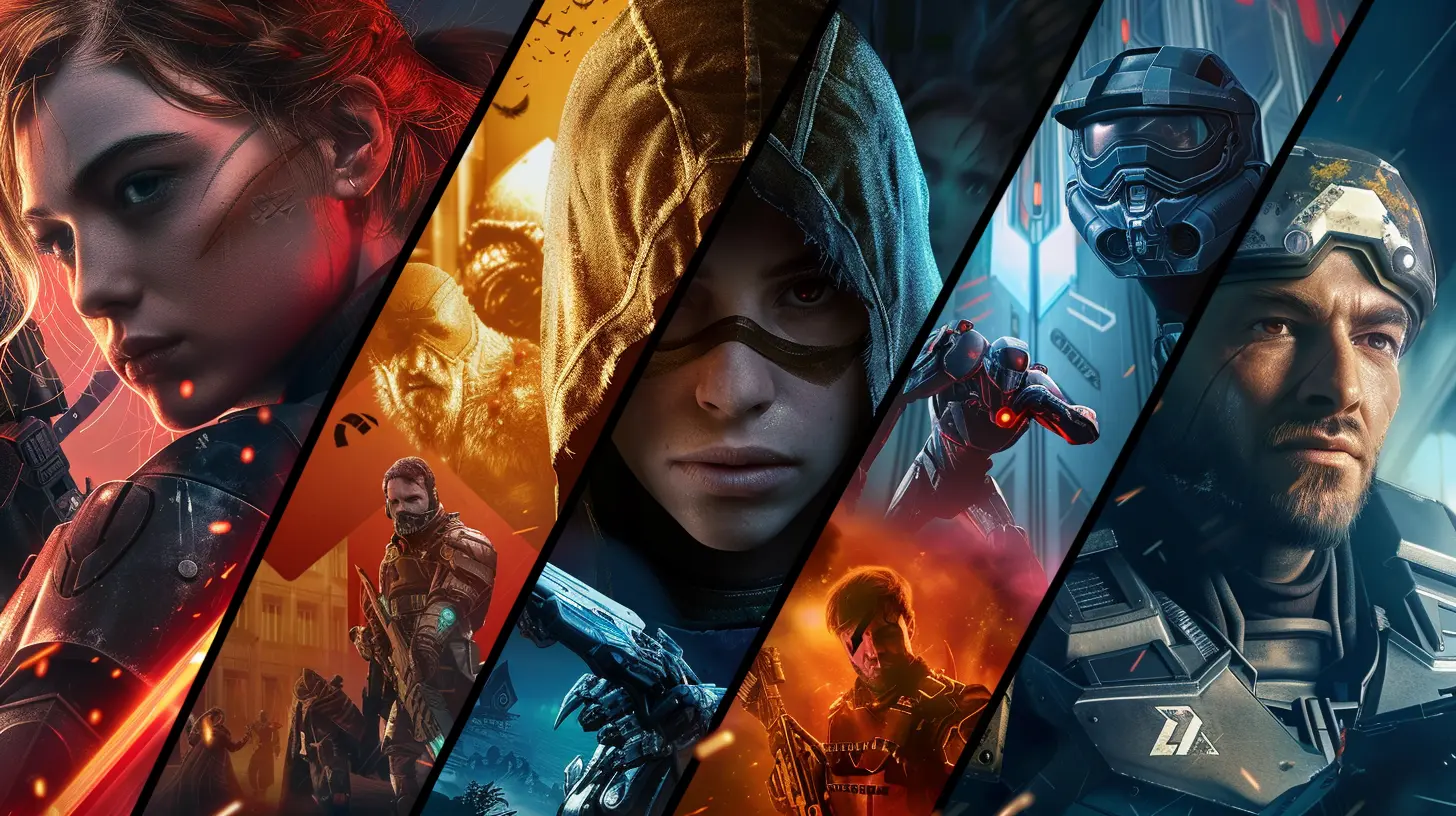How Free-to-Play Games Are Shaping the Future of Cross-Game Metaverses
9 November 2025
Gaming isn’t what it used to be. Gone are the days when you'd drop fifty bucks on a shiny disc, hoping it was worth the hype. Today? Games are free. Well, at least it seems that way. And these “free-to-play” games are not just reshaping player expectations — they’re quietly laying the foundation for something much bigger: the rise of cross-game metaverses.
In this deep dive, we’re going to unpack how free-to-play (F2P) games are changing the rules, setting the stage for a connected digital multiverse that looks straight out of science fiction. So grab a drink, settle in, and let’s talk pixels, profits, and the metaverse revolution.
What Exactly ARE Free-to-Play Games?
Let’s start simple. Free-to-play games are exactly what they sound like: games that cost nothing to download and start playing. No upfront purchase, no strings attached — at least on the surface.But here’s the catch: while you don’t pay to play, you may end up spending on in-game extras. Whether it’s cosmetic skins, battle passes, emotes, or even XP boosts, the money flows through microtransactions. And let’s not forget those "loot boxes."
Some popular F2P games you’ve definitely heard of include:
- Fortnite
- Apex Legends
- Genshin Impact
- Warframe
- Roblox
These games rake in millions (sometimes billions) of dollars a year — not by selling the game, but by keeping you engaged and offering you things you want rather than need.
Why Free-to-Play Works in Today’s Gaming Ecosystem
You might wonder: why would anyone give away a game for free when making them costs millions?It’s actually pretty genius when you think about it. These games hook players with no financial entry barrier. You jump in, test the waters, fall in love with the world — and then BAM: you’re loyally dropping a few bucks here and there on cosmetics or season passes.
Imagine walking into a theme park for free, but every ride costs a little extra. You’d still explore the park, wouldn’t you? That’s the magic of F2P economics.
And with increased internet access, mobile gaming, and the rise of Twitch and YouTube streaming, free-to-play builds massive communities fast. The more players, the more interactions, the more social stickiness — which leads us directly into the world of metaverses.
Metaverses 101: What They Are and Why They Matter
Okay — let’s put on our digital philosopher hats.A metaverse is essentially a shared, persistent digital universe. Think of it as the internet but fully immersive. It's not just playing a game anymore; it's living in a game-shaped space where you can interact, socialize, create, trade, and carry parts of your experience across different digital worlds.
Ever watched Ready Player One? Yeah, like that.
Some characteristics of a metaverse:
- Persistent and ever-evolving
- Avatar-based identity
- Digital ownership (skins, NFTs, currency)
- Social and economic interaction
- Cross-platform, cross-game integration
This is where free-to-play games start to shine. Why? Because they already check off many of these boxes without calling themselves metaverses. Let’s dig into how.
How Free-to-Play Games Are Building the Metaverse Brick by Brick
1. Low Barrier to Entry Fuels Massive Communities
A metaverse is only as valuable as the people inside it. F2P games excel at gathering a critical mass of users. Since there’s no cost to try them, millions of people jump in — and that human capital becomes the fuel for a thriving digital universe.Whether you're flexing your skin in Fortnite or customizing your dungeon in Warframe, you're part of a living, breathing community. This mass adoption is essentially training users to live in a metaverse-like structure.
2. Virtual Economies Are Already a Thing
Games like Genshin Impact and Roblox have built robust, thriving economies — all digital, all fueled by real money.In Roblox, kids are literally designing games and earning cash. In Warframe, in-game items hold actual value and can be traded among players. We've already accepted the value of digital goods, and that mindset is crucial to the metaverse concept.
These in-game economies mirror real-world capitalist structures, laying down economic systems that will shape how players interact in future cross-game metaverses.
3. Avatars and Digital Identity
Your character in Fortnite or PUBG isn't just a character — it's you, or at least your digital self.We go beyond just playing a game nowadays. We’re customizing personas, showing off achievements, expressing styles. This personal attachment to an avatar is essential in any metaverse. In a cross-game universe, you’ll want your identity — your digital self — to travel with you.
F2P games train us to invest emotionally and financially in our digital representations.
4. Cross-Platform Play Is Normalizing Interconnectivity
Want to play Apex Legends on your PS5 against someone on PC while chatting with your buddy on Xbox? Done.Free-to-play titles had to be nimble and inclusive from the start. That’s why most of them support cross-play, cross-progression, and even cloud saves. This seamless connectivity across platforms is inching us closer to a cross-game metaverse where boundaries between games blur.
Doesn’t it feel kind of wild that you can log in from your phone, pick up from your PC, and all the while, stay connected to your friends? That’s not just convenient — it’s foundational metaverse logic.
5. User-Generated Content (UGC) is Driving Creation
Have you seen what people are building in Fortnite Creative or Roblox Studio?The future of metaverses hinges on users being creators, not just consumers. Today’s F2P games are increasingly empowering players to make their own experiences inside the game’s framework — mini-games, new worlds, whole ecosystems.
We're no longer just playing; we’re building. And each creation adds a layer to that digital multiverse tapestry.
From Free to Freedom: The Road to Cross-Game Metaverses
So, what do cross-game metaverses actually look like?Picture this: Your avatar, carrying its gear and skins, seamlessly moves from Fortnite to Minecraft to Apex Legends. Your friends follow. Your wallet follows. Your digital reputation follows.
That's a cross-game metaverse — a unified player identity and economy across multiple game worlds, possibly even from different developers.
We’re not fully there yet, but free-to-play games are building the infrastructure. Let’s see how.
The Building Blocks in Motion
NFTs and Blockchain: Enabling True Digital Ownership
Controversial? Yes. But powerful? Absolutely.Whether or not you're sold on NFTs, the idea behind them — verifiable, portable digital ownership — makes sense for a metaverse. Imagine unlocking a sword in Warframe and actually owning it, able to use it across games or trade it in a marketplace.
Free-to-play games are already comfortable with microtransactions and virtual goods. Blockchain just gives those goods permanence and cross-world utility.
Game Engines Like Unreal and Unity: The DNA of the Metaverse
Many F2P titles are built on engines like Unreal or Unity. These tools allow cross-game compatibility and shared assets, making it easier for developers to create interconnected experiences.Fortnite, in particular, is built on Unreal Engine — an engine that’s not just for games, but also architecture, film, and beyond. That's a huge clue to where things are headed.
Social Integration: From Lobbies to Landscapes
Have you noticed how F2P lobbies are turning into social hubs?Games like Fortnite are now hosting concerts, movie trailers, and talk shows. The line between game and social platform is blurring.
Players aren’t just there to win. They’re chilling, exploring, hanging out — just like you would in a physical world. This shift makes free-to-play platforms ideal candidates for social hubs in a future metaverse.
Challenges Ahead: It’s Not All Rainbow Skins and V-Bucks
Now, let’s not sugar-coat it. We’ve got some bumps on this pixelated road.- Data Privacy: Who controls your cross-game identity?
- Monetization Ethics: Will metaverses become pay-to-win playgrounds?
- Platform Lock-in: Can we really expect rival companies to open up their walls?
- Tech Hurdles: We're talking about massive computing power and seamless infrastructure. Not easy.
Still, gamers are speaking with their time and wallets. The demand for interconnected, low-cost, highly social virtual worlds is real. And F2P games are acting as the front-runners in this digital evolution.
In Conclusion: This Isn’t Just About Games Anymore
Free-to-play games started out as a clever business model. But today, they’re shaping how we think about identity, economy, and space in digital realms. They’re more than games — they’re prototypes of the metaverse.If you’ve ever danced in Fortnite, traded in Genshin, or built in Roblox, you’ve already stepped into the early stages of the metaverse. And guess what? You did it for free.
The lines between games, communities, and economies are blurring. And free-to-play games? They’re the architects sketching the blueprint of our interconnected, cross-game future.
So next time you log in to your favorite F2P title, take a moment. Look around. You might just be witnessing the dawn of the metaverse firsthand.
all images in this post were generated using AI tools
Category:
Free To Play GamesAuthor:

Lana Johnson
Discussion
rate this article
1 comments
Rachel Jones
Great insights! The potential of free-to-play games in shaping cross-game metaverses is fascinating. Looking forward to seeing how this evolves!
November 13, 2025 at 4:33 PM

Lana Johnson
Thank you! I'm glad you found the insights engaging. The evolution of free-to-play games in the metaverse will indeed be exciting to watch!


